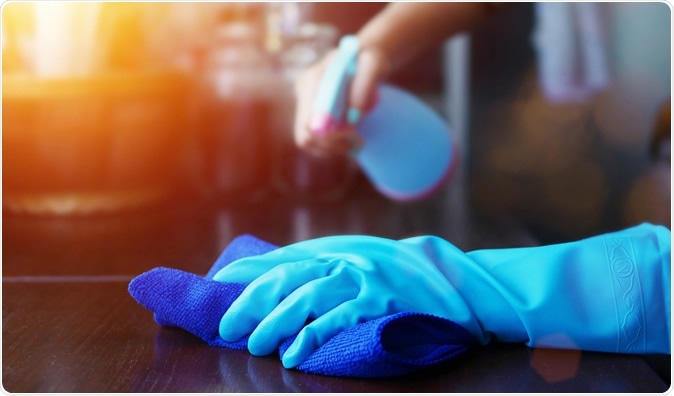When a new pathogen wreaks havoc on the planet, scientists from across the globe race to understand how it behaves and spreads. Now, scientists have found that the novel coronavirus (2019-nCoV) can survive on metal, plastic, and glass for as long as nine days.
A team of scientists from the Ruhr-Universität Bochum (RUB) and the Institute of Hygiene and Environmental Medicine at the Greifswald University Hospital compiled comprehensive findings from 22 studies on coronaviruses and studied how the pathogen behaves. This study, published in The Journal of Hospital Infection, highlights the importance of preventing infection by knowing how long the virus can survive on common surfaces and how to kill it.
Coronaviruses, like other disease-causing microorganisms, can linger on common things that people hold. The virus can spread through hands and surfaces, including door handles, telephone receivers, elevator buttons, call buttons, bedside tables, and anything patients in hospitals frequently touch.

Study looks at the persistence of coronaviruses on inanimate surfaces and its inactivation with biocidal agents. Image Credit: asiandelight / Shutterstock
Coronavirus can stay for nine days
The team has found the novel coronavirus can stay up to nine days on common surfaces, based on their comprehensive analysis of studies about similar pathogens, such as the SARS coronavirus and MERS-CoV. The results show that the viruses can persist or survive on surfaces and remain infectious at room temperature for nine days, with an average lifespan of four to five days.
The team also found that low temperatures and high air humidity levels further boost the coronavirus’s lifespan.
The best way to kill coronaviruses
The best way to combat coronaviruses staying on common surfaces, such as glass, metal, and plastic, is by cleaning them with a solution that’s 62 percent to 72 percent ethanol, 0.5 percent hydrogen peroxide, or 0.1 percent sodium hypochlorite within one minute of contamination.
If these agents are applied at the right time and concentrations, they can reduce the number of infectious coronaviruses by four log steps within one minute.
“As no specific therapies are available for 2019-nCoV, early containment and prevention of further spread will be crucial to stop the ongoing outbreak and to control this novel infectious thread,” the researchers wrote on the paper.
The study has limitations since the team only reviewed studies and data from other types of coronaviruses to land their conclusions. Currently, there is no existing data about the novel coronavirus that is spreading in China and across 25 countries around the globe. The team says that the current coronavirus is like previous ones in terms of its ability to live outside the host and their vulnerability to disinfectants.
A grave threat to the world
The current coronavirus outbreak has taken more than 1,000 people. Two deaths have been reported outside mainland China – the Philippines and Hong Kong. On Feb. 10 alone, about 103 people died in Hubei province and the number of new infections reached 2,478.
Overall, there are more than 43,103 confirmed cases of the deadly virus, which started in a seafood market in Wuhan City, Hubei Province in the last week of December 2019. Outside of China and across 25 different countries, the confirmed cases have reached 395.
The World Health Organization (WHO) has gathered health experts and top scientists in Geneva to try to answer questions about the new illness. Director-General Tedros Adhanom Ghebreyesus urge global unity to fight a common enemy that does not respect borders or ideologies.
Now officially called N-CoV acute respiratory disease, the illness poses a grave threat to human populations across the globe. In line with this, the WHO will work with top scientists in the hopes to curb the infection and stop the spread of the virus.
WHO’s strategic objectives include limit human-to-human transmission; identifying, isolating, and providing care for patients early; identifying and reducing transmission from animal sources; addressing crucial unknowns in clinical severity and extent of transmission, accelerating the development of vaccines, diagnostic procedures, and therapeutics, communicating critical risk to all communities, and minimizing social and economic burden through multisectoral partnerships.
Source:
Journal reference:
Kampf, G., Todt, D., Pfaender, S., and Steinman, E. (2020). Persistence of coronaviruses on inanimate surfaces and its inactivation with biocidal agents. The Journal of Hospital Infection. https://www.journalofhospitalinfection.com/article/S0195-6701(20)30046-3/fulltext